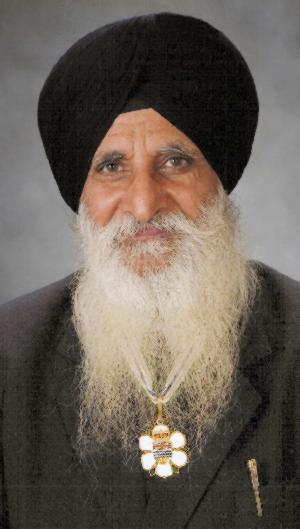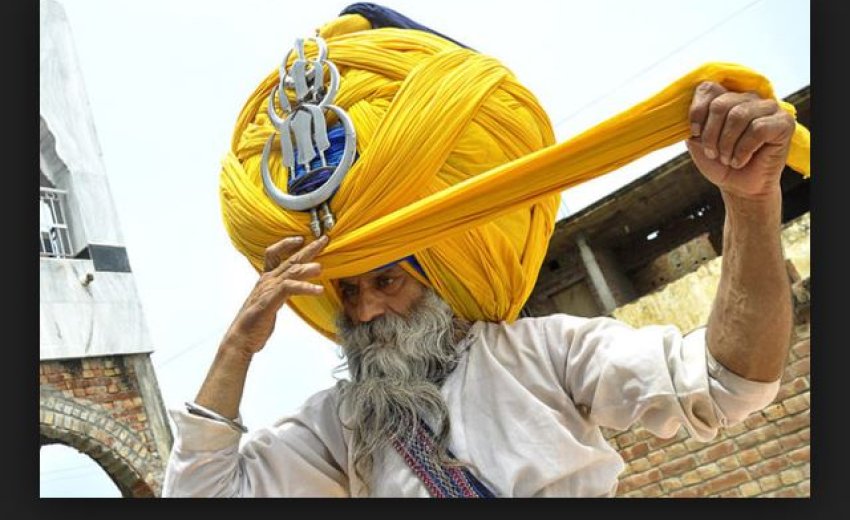 It has been customary with adversaries and sacrilegious people who have lost touch with their own religious identity to engage themselves in debates to humiliate and re-define the values enshrined in the age old scriptures, religious concepts, hard earned traditions and philosophy of a specific religion they deviated from.
It has been customary with adversaries and sacrilegious people who have lost touch with their own religious identity to engage themselves in debates to humiliate and re-define the values enshrined in the age old scriptures, religious concepts, hard earned traditions and philosophy of a specific religion they deviated from.
Such critics want to alter and rewrite the well defined boundaries and religious traditions to hijack religion to suit their needs guided by hidden agendas. They want a religion of convenience to suit their individual tastes. In fact, such people are always looking for opportunities to discourage and frustrate the the people who practice their faith so that the followers become confused at the cross roads.
It looks ridiculous that such people are trying to re-construct the boundaries of the Sikh Code of Conduct and Sikh values about which they are quite blank and completely ignorant about the religion. No doubt, the critics are trying to mislead the youth but let’s not forget that this kind of reconstruction process that is taking place may result in an ever-increasing gap between religious teachings and religious ideals of the new generations. This would need urgent solutions to overcome the problem and increasing ignorance of new generations.
Few days ago I was reading an article published in ‘Washington Post’ with the heading ‘A Ritual Slowly Unravels In India: Alarm Grows as More Sikh Youths Give Up Turbans’. The article was produced by Rama Lakshmi. The writer referred to the statement made by a misconceived juvenile who seems to have little or no knowledge of age-old technology of hair and Sikh turban saying, "Why fuss over external symbols -- They say Sikh men have to grow their hair and wear turbans, and women cannot remove their body hair or trim their eyebrows. Is that what we want to reduce Sikhism to?" Possibly, the student might have been raised without Sikh religion. He may be lacking faith in his religion or religion may be a bewildering experience for him alone. Yet the message can be an undercurrent for which the Sikh leaders must be concerned.
Sikhism does not force any person to embrace it or convert to it. Possibly the immature words are just to open unnecessary debate on the religious beliefs at the time when the Sikhs are celebrating ‘Vaisakhi’, the day when Guru Gobind Singh initiated Khalsa and ordained the five beloveds (Punj Pyarey) to wear the five articles of Sikh faith (Kesh-hair, Kangha-wooden comb, Kara-steel bracelet, Kirpan-sword and Kachhehra-underwear). The statement by the dispirited youth stating that the Sikh turban and the unshorn hair reflect only the cultural realities and that they were never meant to be of religious requirement, is confused or willfully misleading. Without prejudice to the Sikh code of conduct, traditions, conventions and religious laws, it is my conviction that the traditions, conventions and beliefs don't come out of thin air; they reflect the centuries old practices and values of a people. Once the traditions are given religious authenticity, truthful followers obey them for all the times. Without doubt, hair and Sikh Dastaar are religious requirements and hence need no frivolous interpretations by frustrated individuals.
Coming back to the point, I would like to clarify the Sikh perspective on the sanctity of keeping hair and wearing the turban (Dastaar) as a Sikh crown. Clearly, Sikhism is not a ritualistic religion. It is not a religion for anybody’s convenience. It is practical religion with a simple way of life for everybody. Sikhism is a revealed religion. Its teachings emanate not from the mind or the thinking of any person, but straight from God Himself. The word ‘Sikhism’ is not a word for ‘decorative use’ by the opportunists, but it enshrines in it a code of conduct to practice and live by. It is a religion that firmly believes in both Bani (Inner Norm) and Bana (Outer Form). Mundane terms and whims of selfish individuals do not find any place to be practiced under this religion. The name ‘Sikh’ is not reserved for a specific category of people but it is used for a person who believes, practices and earns by himself or herself the Sikh tenets, principles and concepts laid in scriptures witnessed by the Sikh history and experienced in its heritage.
Sikhism is a vast life structure, and yes, Sikhi is beautiful also. It believes in honest living and selfless service to the entire human race. It is religion of love and acceptance. It believes in universal brotherhood, peace and prosperity over the globe. Its principles are universal and have not become rusty with passage of time. It is an irony of fate that the non believers of the philosophy try to push their contrary points to redefine the hard earned identity by the Sikh followers by keeping their hair and tying a Dastaar. Unfortunately, few of the youth who have lost touch with their faith may become victim to the false propaganda of antagonists. Yes, it is hard in this challenging age to grow up as a Sikh. The turban and hair are always ‘in the spotlight’. Under this scenario, think of a snake swallowing its own tail.
In fact, turban is an old costume of the world. Globally, the Sikhs have been known by their unshorn hair, beards and turbans. Dastaar (turban) is an article of Sikh faith. It is an inseparable part of dress and essential requirement of the Sikh religion. Since inauguration of the Sikh faith, all the Sikh Gurus and their followers have been wearing turban as an article of their faith. Dastaar is crown used to be bestowed upon truthful Sikhs as a robe of honour by the Sikh Gurus. The importance of ‘Dastaar’ finds its mention in Sri Guru Granth Sahib (Sikh Scripture) and Sikh Rehtnamas (Code of Discipline). The Sikh Reht Maryada (The Sikh Code of Conduct and Conventions) which has now become the protocol that regulates the Sikh way of life, pronounces, “for a Sikh, there is no restriction or requirement as to dress except that he must wear Kachhehra and turban. A Sikh woman may or may not tie turban.” (Chapter X, Article XVI, clause “t”). Religiosity and binding of Dastaar in Sikhim is confirmed by Bhai Nand Lal (a close associate of Guru Gobind Singh) in Tankhahnama, Bhai Desa Singh in Rehtnama and Ratan Singh Bhangu in Gur Panth Parkash.
On the day of Vaisakhi (Inauguration and Saajna Divas of Khalsa) in 1699, Guru Gobind Singh (10th Guru of the Sikhs) initiated the Sikhs with Khande Di Pahul (Amrit - elixir). He ordained the Khalsa to wear five Kakars and to stay away from social evils like drugs, adultery and hatred towards human beings. The Sikhs were required to keep uncut hair and maintain them clean and tidy under a turban. Since then, the religious tradition of wearing turban turned into an essential religious code, which requires turban as an integral part of the Sikh dress till the last moment of cremation. The historicity of the unbroken practice has since been recognized continuously and held in high esteem by the Sikhs. The religious requirement continued unabated, even during the hundred years of British rule over Punjab. The authority of Sikh Code of Conduct (Sikh Rehat Maryada-1945) has been recognized by many countries of the world through respective enactments. The Sikh men recruited in the army of the British fought in World War I and II in Europe with wearing their turbans.
Yes, today's generation, raised without religion and living in the materialistic world of glamour may complain about keeping their hair unshorn under a turban but what they have forgotten is that to be a Sikh hundred years ago was even more challenging than it is today. During the hunting of the Sikhs by Mughal rulers in 18th century, the Sikhs were recognized by their long, unshorn hair and their turbans. History is witness to the innumerous sacrifices made by the Sikhs who accepted martyrdom rather than cut their hair and throw away their turbans. There were times in the history when Sikh scalp with its unshorn hair carried a price. Bhai Taru Singh was captured by the Mughals and he refused to have his hair cut and thus his scalp was scrapped off. Let the complaining youth remember that Sahibzadas Zorawar Singh and Fateh Singh (younger sons of Guru Gobind Singh) were offered all sorts of luxuries to give up Sikhi and to convert to Islam but they refused, and the Mughals had them bricked them alive in the walls at Sirhind (Fatehgarh Sahib in Punjab). These hard facts of history cannot be twisted by the so called modernized thinkers to mislead Sikh youth.
Without any confusion, Dastaar is a matter of pride, dignity, a symbol of courage, responsibility, piety, purity of mind and religious identity for the Sikhs. Turban is ‘seal’ of the Guru for a Sikh. Yes! "Every fold of the turban of a devout Sikh is like a historical chapter of his blood-soaked history, which every Sikh carries with him with great pride and dignity”.
To create awareness amongst the masses about tenets and lovely conventions of the Sikh faith, the Sikh elites need to educate teachers, preachers and socio-religious leaders through proactive seminars and interactive discussion groups so that innocent people do not get entrapped into wishful baits of conspirators. Instead of segregation, youth would need integration. Community would need to start fresh communication with new generation and inspire the parents to reduce the information gap towards wearing turban. I do not feel shy to admit that to some extent we have failed to bring up and inspire our youth without ‘us’ being role models. Youth need exemplary mentors to lead them in today’s life. Cyber technology has entered our bed rooms. At this stage, parents need to be practical and share stories about great Sikh heroes with the new generation by keeping them into confidence. Let the youth work hard to integrate and enrich the land wherever they live and make this globe a better and peaceful place as envisioned by the Sikh Gurus. Sikh principles and beliefs are not open for selfish compromise. Let’s not forget that Turban (Dastaar) is an article of Sikh faith and the progeny is under religious obligation to respect beliefs, traditions, long tested conventions and framework of their religion.
Dr. Raghbir Singh Bains is author of the ‘Encyclopaedia of Skhism’ on multimedia and a well known social activist.

